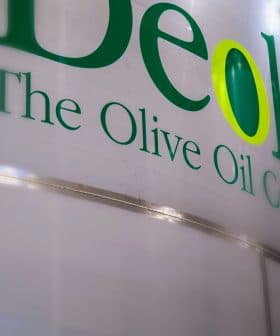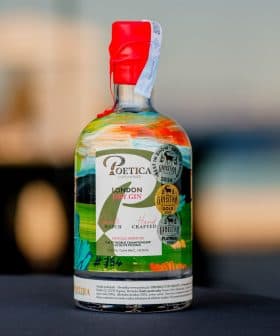Olive Oil Prices Hit Two-Year High in Spain
Extra virgin olive oil prices in Spain have reached their highest point since November 2018, with prices in Jaén reaching €272 for 100 kilograms, 27.8 percent higher than a year ago. Various factors such as the temporary suspension of tariffs, challenging climatic conditions, and global olive oil consumption outpacing production have contributed to the price increases, benefiting olive growers but potentially leading to higher prices for consumers and decreased demand in the future.
Extra virgin olive oil prices in Spain have reached their highest point since November 2018, according to data from the International Olive Council (IOC).
The price of extra virgin olive oil in Jaén, which is considered the benchmark for Spanish olive oil production, reached €272 for 100 kilograms, 27.8 percent higher than it was one year ago.
Everything depends on the elasticity of demand. The moment is not the most appropriate for consumers to pay these prices due to a weakening in net income.
The prices of all grades of olive oil from Jaén have also enjoyed a steady increase over the past year, with olive pomace oil, non-virgin refined olive oil, virgin olive oil and lampante olive oil prices hitting two year highs.
“There have been several unprecedented circumstances, which have meant that a year in which Spain is going to have an average production, prices have risen to more than €3.00 [per liter] in certain categories,” Juan Vilar Hernández, an international olive oil analyst, university professor and strategic consultant, told Olive Oil Times. “This had never happened.”
See Also:Exports and Prices Are Looking Up in GreeceA combination of the temporary suspension of tariffs negotiated by the United States and European Union last month, challenging climatic conditions, COVID-19 pandemic and global olive oil consumption outpacing production in the current crop year have all contributed to the increasing prices.
“It has been a strange international harvest, where none of the forecasts have been fulfilled for climatic reasons and industrial performance,” Vilar said. “The stars have aligned to benefit the sector at source, without a doubt.”
Normally, when Spanish producers enter an off-year in the olive trees’ natural alternate bearing cycle, the rest of the Mediterranean enters an on-year. This leads to a relatively consistent level of global production, which, in turn, balances out prices.
However, low yields in Spain this year have been compounded by poor harvests in Italy, Greece, Tunisia and Turkey, all of which have led to lower production levels than initially forecasted.
“This has come together with a positive evolution of consumption, which has positioned itself above demand, pulling every one of the olive oil categories on the rise, especially extra virgin, as it is the least abundant in percentage terms,” Vilar said.
Increasing prices in Spain come as a massive relief to producers of all sizes, according to Vilar. Since olive oil prices plummeted in March 2018, producers have had to sell their oils for less than production costs.
Various relief measures from the Spanish government and European Union failed to appease olive farmers, who have frequently protested the persistently low prices since 2018.
“These price increases at origin benefit all olive growers,” Vilar said. “That is to say; it is good for everyone. However, it benefits modern olive groves more, which will see their profit margins grow to a greater extent in absolute value than traditional groves.”
Vilar added that increased prices at origin do not benefit the entire sector, with bottlers and packagers likely to lose money as they pay more for even the cheapest grades of olive oil. Vilar said this could lead to an increase in prices for consumers and a potential decrease in demand.
See Also:Apulian Producers Call for More Government Support for Olive Oil SectorOutside of Spain, extra virgin olive oil prices in both Bari and Chania, the benchmark markets of Italy and Greece, respectively, have also rallied. Jaén, Bari and Chania represent roughly 60 percent of global olive oil production.
Prices in Bari currently sit at €469 per 100 kilograms, slightly down from the highs of earlier in the crop year, but still 51 percent higher than the same point last year.
Likewise, prices in Chania have risen to €257 per 100 kilograms, their highest levels since October 2019 and 24 percent higher than prices at the same point last year.
In a note sent by the Spanish Association of Olive Oil Exporting, Industry and Commerce (Asoliva) to its members and Olive Oil Times, Executive Director Rafael Pico Lapuente wrote that rising global demand paired with poor harvests throughout the Mediterranean would continue to impact international prices.
“It can be easily deduced that a decrease in the availability of olive oil in Spain, the world’s leading producer country, and a lower availability in the rest of the producing countries, may affect the evolution of international market prices, as in fact, seems to be occurring,” he wrote.
While forecasting where prices are headed is never an easy task, Vilar doubts that they will reach the record highs of 2016/17, when extra virgin olive oil was selling for €4.15 per liter. He said that prices this high would be detrimental to the sector and drive down demand in most of the world.
However, he did not rule out further increases as the crop year evolves and harvests get underway in the Southern Hemisphere.
“Prices could continue to increase, but with certain limitations,” he said. “Everything depends on the elasticity of demand. The moment is not the most appropriate for consumers to pay these prices due to a weakening in net income.”
“Other factor that could stop the evolution would be an improvement in the weather, which would envision a higher yield next year,” he added.









